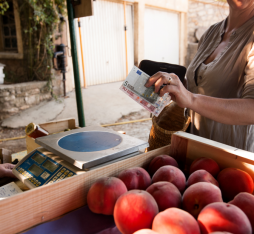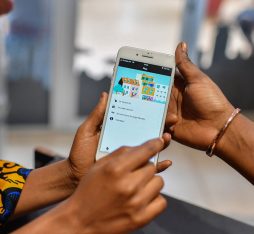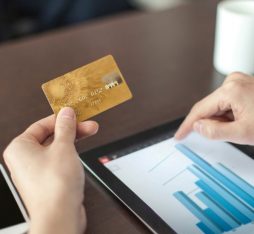Financial services generate large volumes of usage data. This data is used to improve services and knowledge about customers. However, data about relationships between financial service users themselves is utilized a lot less. Nevertheless, this data can provide valuable insights for behavior analysis. To analyze the relationships between customers, Orange’s research teams have developed the Orange Money Social Network Analysis project, based on Orange’s money transfer and mobile payment services in Africa. “We’ve adapted social media analysis for Orange Money by creating specific algorithms,” Sandrine Le Calvez, Head of the Inclusive Digital Financial Services Research Program, explained. “Each transaction made via Orange Money demonstrates the relationships between individuals, as we only send money to people we know. This data allows us to produce graphs of Orange Money users’ social networks and lets us produce indicators to improve our knowledge about customers.”
Establishing and Examining Groups
At the Orange Research and Innovation Exhibition, the project’s team will use an interface to show the benefits of the different metrics and how data scientists can use this tool. “The Orange Money Social Network Analysis tool means we can calculate metrics and statistics about a customer or about a group of customers,” explained Baptiste Hemery, Research Engineer for this project. For example, we can track the size of users’ networks or how often they exchange money with their close friends and family or with their acquaintances.” Being able to analyze a group of users is particularly innovative. It involves managing transactional data so that users can be placed into one or more groups (family, friends, colleagues, business relationships, etc.). “This group analysis approach is complicated for two reasons,” explained Fabrice Jeanne, Researcher and Head of the Future Mobile Money Services project, “We must process huge volumes of data, made up of several millions of users and several hundred millions of transactions, and assess the quality of the group detection results.”
Improving Customers’ Experiences
The first use case that will be demonstrated to visitors at the exhibition is how detecting and analyzing groups can help ensure the security of Orange Money’s services. For each new transaction, the tool calculates the social distance between the sender and the recipient in real time, which could be useful in determining the transaction’s trustworthiness. “Transactions with smaller social distances can be considered reliable, while transactions with greater social distances can be considered risky,” Baptiste Hemery explained. “The benefit of our tool is that it uses set groups to optimize calculating this distance, while respecting users’ privacy. This means that if the sender and receiver do not know each other but are part of the same or a similar group, we can judge the transaction as not being risky.”
If the sender and receiver do not know each other but are part of the same or a similar group, we can judge the transaction as being low risk.
The second use case that will be presented to visitors is how this tool can improve bank loan offers. The tool can improve Orange Bank Africa customers’ individual credit scores for loan applications if their neighborhood or group is considered to be positive. This new type of scoring is a real plus for mobile banking, which aims to make credit accessible to more people. “Thanks to our tool, Orange Bank Africa should be able to grant loans to more customers and thus achieve its goal of being an inclusive bank,” Romain Trinquart said, data scientist in this project.
Making Orange Money More Competitive
The aim is that Orange Money data scientists will be using this technological building block as of 2023. The idea of community remains important to the team and this research project is the result of a collaboration between Orange and the GREYC laboratory (a French research lab in digital sciences), which is associated with the CNRS (Centre nationale de la recherche scientifique — the French National Center for Scientific Research). Safa El Ayeb is currently finishing her thesis “Analyse de réseaux sociaux pour Orange Money” (“Social Network Analysis for Orange Money”). It will be followed by another thesis “Apprentissage pour identification de groupes d’intérêt sur réseau socio-transactionnel” (“Learning for identification of interest groups on socio-transactional networks”). The team is also wanting to develop the Orange Money Social Network Analysis tool further and find new uses for it, such as helping to prevent money laundering and detecting fraud. “Competition in the ‘mobile money’ field is fierce in Africa and the Middle East,” Sandrine Le Calvez concluded. We want to give our subsidiaries in the area innovative ways of better understanding their customers’ behavior and improving their offers.”







